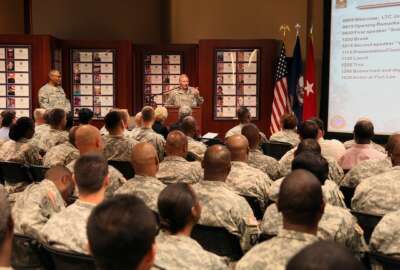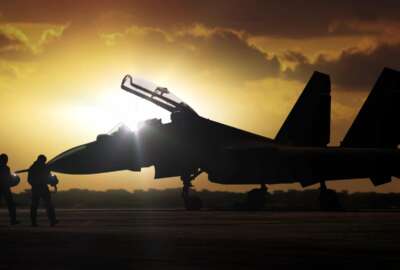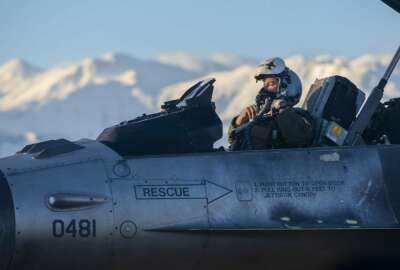
Air Force reduces trainers’ tours to increase readiness, better family life
The Air Force is reducing tours for instructors from four years to three years to reduce assignment fatigue.
The Air Force is shortening the time its trainers stay on duty in hopes of creating a better lifestyle for airmen and to keep their operational skills sharp.
This month, the Air Force reduced the tour length for military training instructors, training leaders, professional military educators and Air Force Education and Training Command technical instructors from four years to three years.
“The three year tour does a few things, but part of it was looking at how we restore that balance between operational readiness and lethality of our Air Force and the ability to take a professional development assignment that challenges you to do something different,” Commander Maj. Gen. Timothy Leahy, of the Second Air Force, told Federal News Network.
Airmen serving in those positions have the option to sign on for a fourth year of duty if they choose.
Air Force officials decided to make the change after surveying military training leaders and instructors this year. While they reported positive experiences, assignment fatigue began to increase sharply around the three-year mark.
One of the main stressors is the life-work balance and responsibilities outside of typical duty hours.
“It is a 24/7 job and when you look at how much responsibility they have at getting these citizens that are coming from all walks of life in America and trying to help develop them and mold them into the airmen that we need. It’s a big deal,” Second Air Force Command Chief Master Sgt. Joanne Bass told Federal News Network. “We’re not talking small numbers here. They are responsible for 40 to 50, upwards of 120 trainees in their charge. They have a 24 hour job of growing the airmen that we need for the Air Force that we need.”
Related Stories
“It is a very demanding job, especially with our hours,” she said. “With my peers that’s what’s affected them because of their families. Our shifts range from nine to 10 hours a day. We work weekends. It’s a 24-hour a day job. We have overnight shifts and things are constantly changing. In order to be there for our airmen, it takes a lot from us.”
Another concern leading to the change is both the Air Force and airmen felt four years on special duty might dull the operational abilities of some instructors.
“Talking with career field managers, who are in charge of taking these occupations and overseeing them throughout the Air Force, and asking them, ‘What’s the right time frame?’” Leahy said. “How much of each expertise is lost when they are out of that career field when they are out for three of four years or longer. Take cyber for instance, the changes are pretty dynamic. If you haven’t been in that operational world for a while and you show back up; you feel like you’re a little behind. You’ve missed a little bit.”
Bass added that it’s important to keep instructors fresh as well. Ninety three percent of all airmen come through training with the Second Air Force. The trainers need to be the best possible to create good airmen. Last fall, military training leaders were responsible for training more than 30,000 airmen in 49 locations.
The Air Force is going to be watching how the new policy pans out in the future. It’s possible that they service may extend the reduction in tours to other overburdened occupations.
Copyright © 2025 Federal News Network. All rights reserved. This website is not intended for users located within the European Economic Area.
Scott Maucione is a defense reporter for Federal News Network and reports on human capital, workforce and the Defense Department at-large.
Follow @smaucioneWFED





